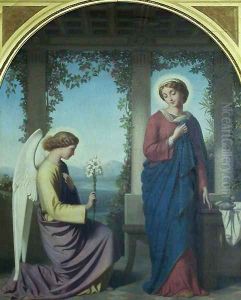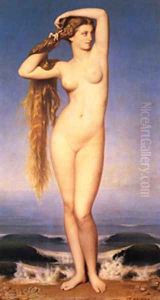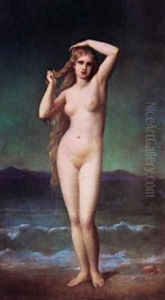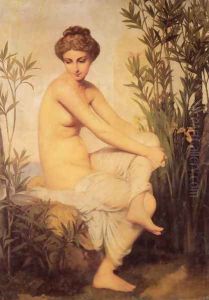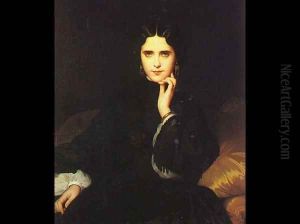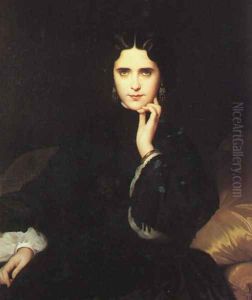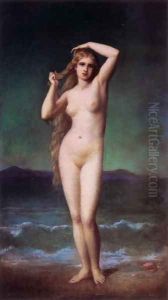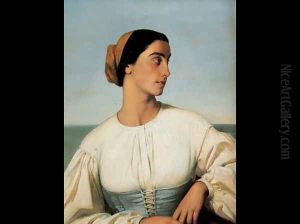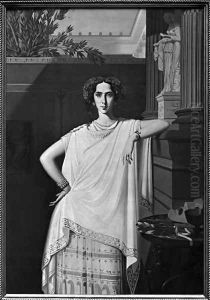Eugene-Emmanuel Amaury-Duval Paintings
Eugène-Emmanuel Amaury-Duval was born on April 16, 1808, in Montrouge, Hauts-de-Seine, France. He was the son of the diplomat Amaury Duval and thus was known in the world of art and society by the name of Amaury-Duval. Coming from a well-off family, he had the opportunity to pursue his artistic interests from an early age.
Amaury-Duval was one of the first students to study under Jean-Auguste-Dominique Ingres, who was a prominent figure in Neoclassicism and an advocate for the return to traditional academic values in art. Under Ingres, Amaury-Duval developed his skills and became one of his most faithful followers, adopting the Neoclassical style that emphasized precision, clear outlines, and polished execution. Ingres's influence was pivotal in Amaury-Duval's development as an artist, and it's reflected throughout his body of work.
Amaury-Duval exhibited at the Paris Salon for the first time in 1833 and continued to participate regularly. His works often depicted religious themes and classical subjects, which were common in academic art circles of the time. He also painted a number of portraits, applying the same precision and clarity he learned from Ingres to his depictions of the human figure.
One of his most famous works is 'The Madonna of the Lilies', which was completed in 1865. This painting is a prime example of Amaury-Duval's style, characterized by its serene composition, purity of line, and smooth brushwork. His approach to the subject matter was often idealistic, a hallmark of the academic artistic traditions of the period.
In addition to painting, Amaury-Duval also wrote about art. His writings provide insights into the artistic theories and debates of his time. He was also involved in the decorative arts, contributing to the design of stained glass windows for the church of Saint-Germain-l'Auxerrois in Paris.
Eugène-Emmanuel Amaury-Duval passed away on December 25, 1885, in Paris. Although he did not achieve the same level of fame as his mentor, Ingres, Amaury-Duval is remembered as a devoted exponent of the Neoclassical style and a significant figure in the French academic art scene of the 19th century.
